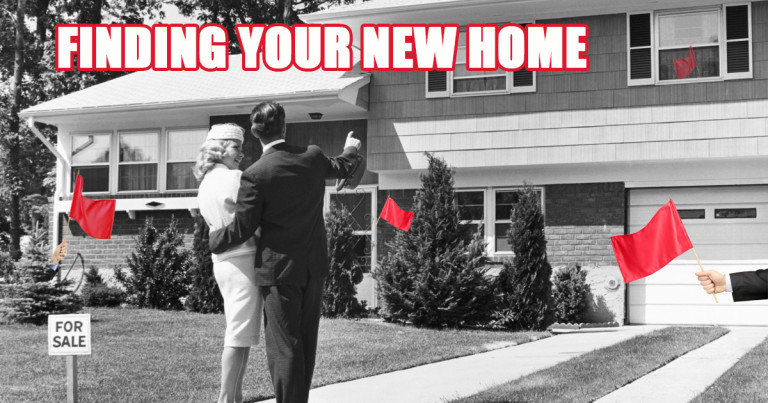Finding a quiet place to live can be tricky business and can take a bit of time. Research, multiple visits, and looking for red flags are all necessary steps if you want to live in peace and quiet.
Previously in The Resonance in Your Residence
If you’ve read “The Resonance in Your Residence” part 1 and part 2, you might be wondering how you could ever find a place to live that isn’t going to set you up with noisy neighbors, and noisy nightmares. In part 1, we worked through some things you can do in your own home to help with the echo, using absorptive materials to improve the room acoustics. In part 2, we talked about noise isolation and impact insulation to help deal with sounds from next door or above, including footsteps. In our examples, the solutions typically end up as a construction project to resolve the noise problems. This is especially true when trying to deal with the mechanical noise from heating and cooling (HVAC) and plumbing, or other building systems. Here in part 3, we have some pointers to help you avoid the noise problems in the first place.
Finding Your Next Place
The first thing to consider is your own noise threshold. What can you put up with? Noise is a part of life. Even living out in the country can pose noise problems. Because the background noise can be so low, you may hear sounds that would otherwise have gone unnoticed. If you choose to live in a more urban setting, there are a variety of noise sources that can penetrate your home. You might know that you’re more sensitive to noise than others. You might work from home, work at night, or have family members who need more quiet than others.
Visit and Research
It’s important to visit the site of your potential new home at different times of day – and night. Listen to what you can hear outside, as well as inside. Ask a friend or family member to come along and walk around upstairs, while you listen from downstairs. Do some research and check local noise ordinances for allowed noise levels. See what kind of activities are going on in the building or the neighborhood. Take a look on internet maps for what is nearby, and you will probably spot some obvious noise sources.
Obvious Noise Sources
- Airports and Flight Paths
- Rail Lines
- Busy Roads
- City and School Bus Routes
- Restaurants, Nightclubs, and Bars
- Performance Venues
- Emergency Services
The ABD Engineering & Design’s Grand Rapids office is located across the street from a fire station. We are acutely aware of every time they roll out for a call. We can also hear bells, on the hour, from the half-dozen or so churches nearby. We can hear cars and trucks on an adjacent main road. The drone of highway traffic from about eight blocks away isn’t loud, but it’s there. We are in a historic building, so there are things we can’t change. If you lived in our building, maybe some of that would be OK, and others – not so much.
Condominiums, Apartments, and Mixed Use
A building with its own retail, restaurants, and other commercial enterprises can be really convenient. It can also be very noisy. Sharing walls and other building partitions with other people or businesses requires special consideration. Ideally, when the building was designed and built, an independent acoustical consultant was on the job. Hopefully the architect followed the acoustical recommendations, and the construction company built everything properly. Sometimes, sellers or property managers actually advertise the Sound Transmission Class (STC) ratings of the walls, doors, and windows, and Impact Insulation Class (IIC) ratings of floor-ceiling assemblies. The minimum STC/IIC rating is 50. The higher those ratings, the better they should perform. Keep in mind, those advertised or designed ratings might not accurately reflect what was built.
Looking for Trouble
As you walk through a potential condo or apartment, and consider what might or might not bother you, look for red flags. Look out the windows to see what might be going on nearby. Are the trash and recycling bins just outside? Those might be noisy as people use them, and when they are picked up every week. Is there a fitness center in the building? Do the stairs attach to one of your walls? Is your front door near the elevator lobby? Do other tenants have to pass your unit to get to theirs? Can you run the heating and/or cooling to see how noisy they are? What activities are going on above, below, and to each side? Does the unit above yours have carpeting (great at reducing foot fall noise) or hard surfaced floors? You might even listen to someone flush the toilet in a neighbor’s unit. If you’re in a high-rise building, the higher up you go, the more traffic and other noise you might hear from farther away. You might have to look in a wider circle for potential noise sources. It’s better to spend time up-front, than deal with the frustration later.
It’s important to remember that if you notice potential troublesome sounds, those red flags are not likely to change or go away. As you find your next new home, apartment, or condominium, we hope you find a place that has given the same high value to quiet that you do. We hope the architects and builders have taken pride in their work, and have already done what it takes to help make your new home a refuge from unwanted noise.
We’re usually able to provide a proposal in about one week and schedule first site visits within 2-3 weeks. Our initial reports typically take an additional 2-3 weeks.
